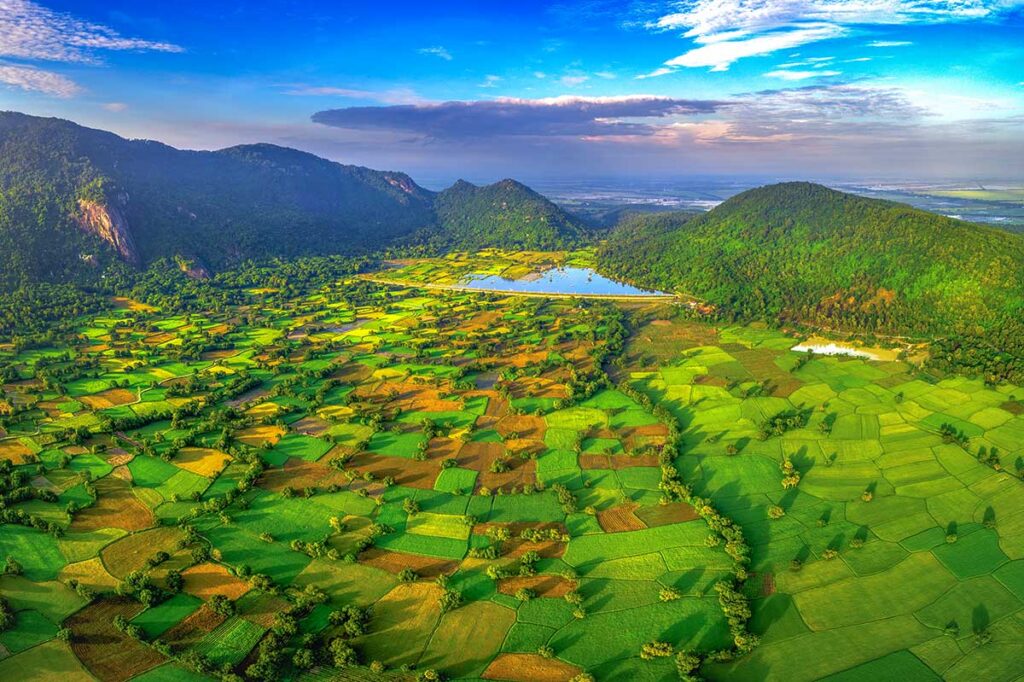What are the Ta Pa Rice Fields?
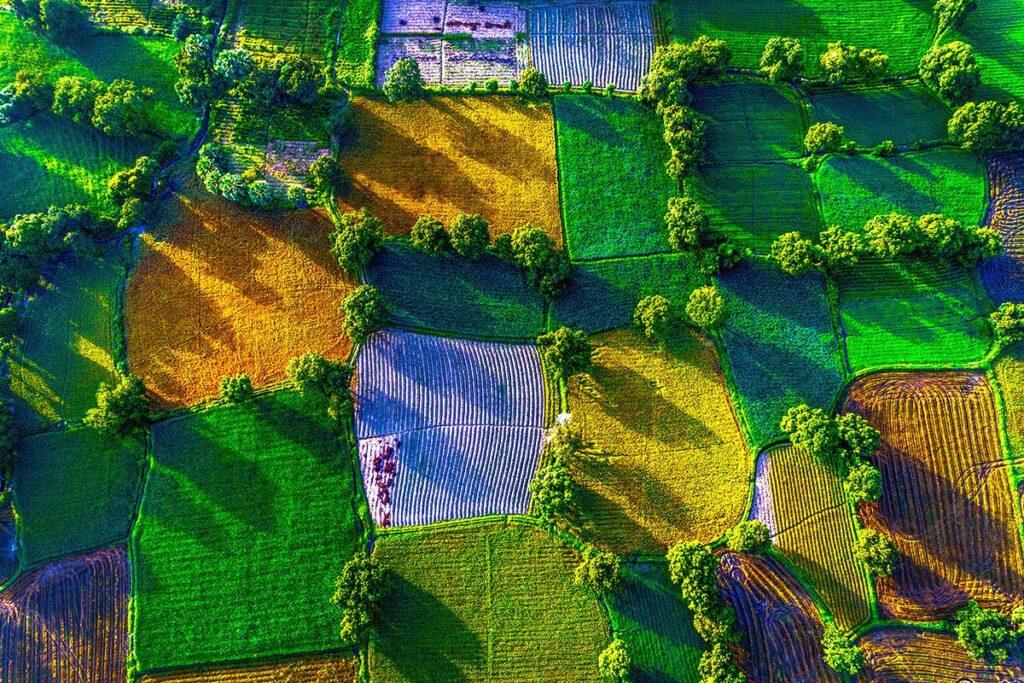
The Ta Pa Rice Fields are a wide stretch of farmland at the foot of Ta Pa and Co To mountains in Tri Ton district. Unlike the uniform rice paddies you see in much of the Mekong Delta, these fields form a patchwork of colors because different plots are planted and harvested at slightly different times. Depending on the season, you might see bright green shoots next to golden rice ready for harvest, creating a natural mosaic across the plain.
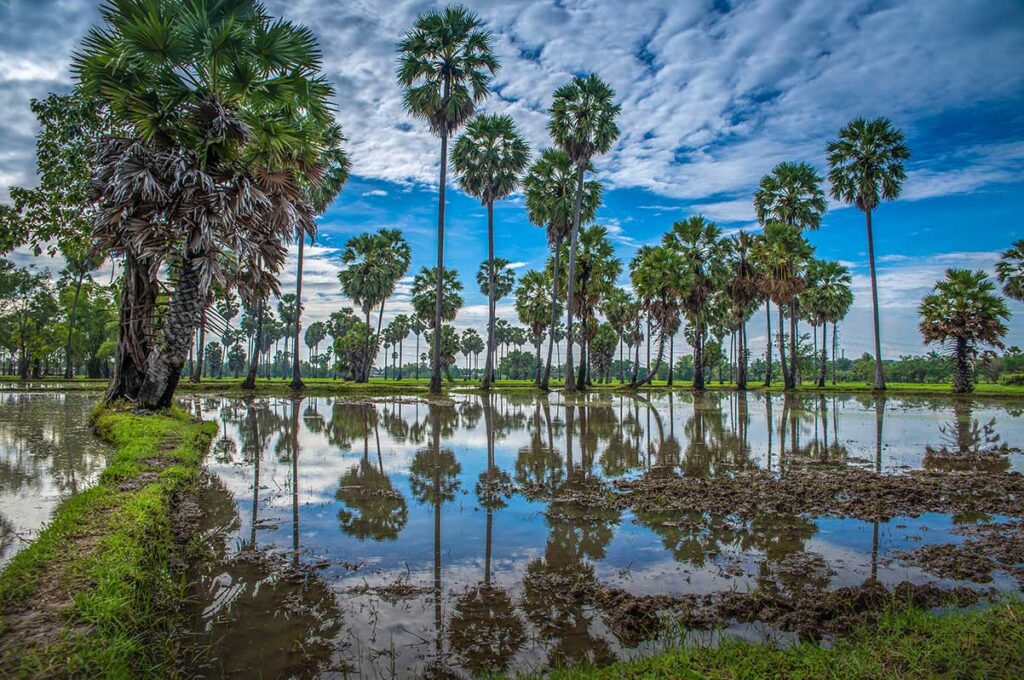
What makes this landscape especially striking are the rows of tall sugar palm trees scattered throughout the fields. These palms are a symbol of An Giang and of Khmer communities in southern Vietnam, often appearing in photographs of the region. Together with the rice paddies, they give the area its distinctive and instantly recognizable look.
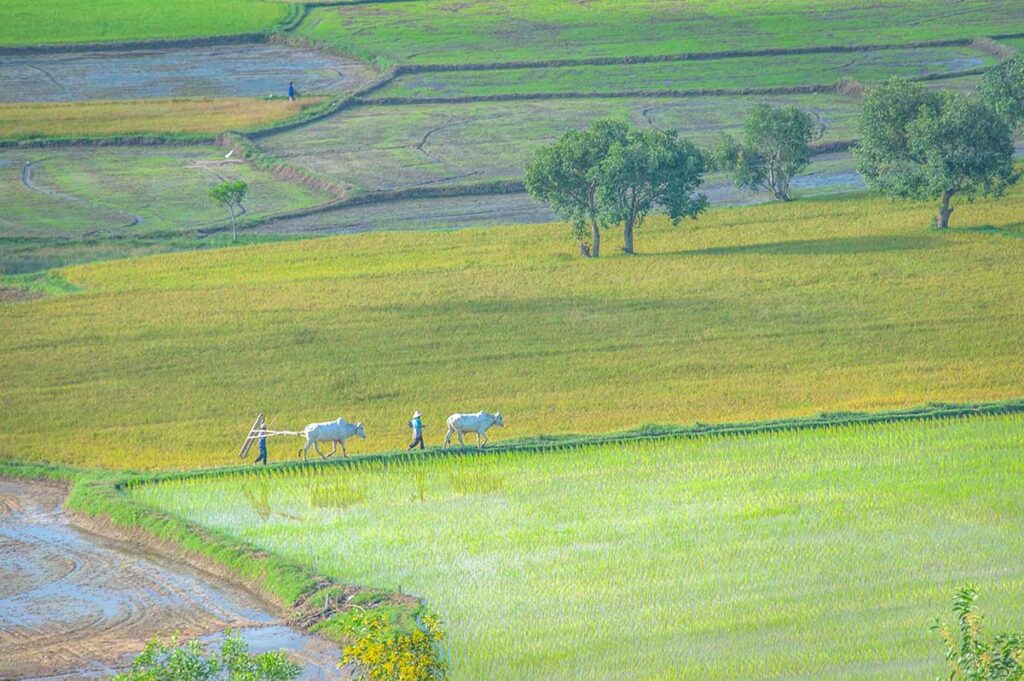
The fields also carry a cultural dimension. Local Khmer farmers follow traditional cooperative farming methods, working together from one field to the next. This practice not only shapes the rhythm of the countryside but also adds to the variety of colors in the fields, as no two plots are exactly at the same stage of growth. For travelers, the Ta Pa Rice Fields are less about dramatic mountain scenery and more about experiencing the quiet, authentic countryside of the Mekong Delta.
Best time to visit
Unlike northern Vietnam, where rice is harvested only once a year, the Mekong Delta has multiple rice crops. That means the Ta Pa Rice Fields change appearance several times, and you can see different landscapes depending on the month you visit.
- Winter–Spring crop – planted Nov–Dec, harvested Feb–Mar
- Summer–Autumn crop – planted Apr–May, harvested Jul–Aug
- Autumn–Winter crop – planted Aug–Sep, harvested Oct–Nov
What this means for travelers:
- Planting period (Nov, Apr, Aug): fields are watery and reflective, with farmers working in the mud. Good for photos if you like rural life scenes.
- Growing months (Dec–Jan, May–Jun, Sep): lush green paddies stretch across the plain. This is when the fields look fresh and vibrant.
- Harvest months (Feb–Mar, Jul–Aug, Oct–Nov): the landscape turns golden, creating the classic postcard views. Among these, October–November is the most famous because the rice is ripe at the same time as the flooding season, when the fields mirror the sky and the sugar palms stand out dramatically.
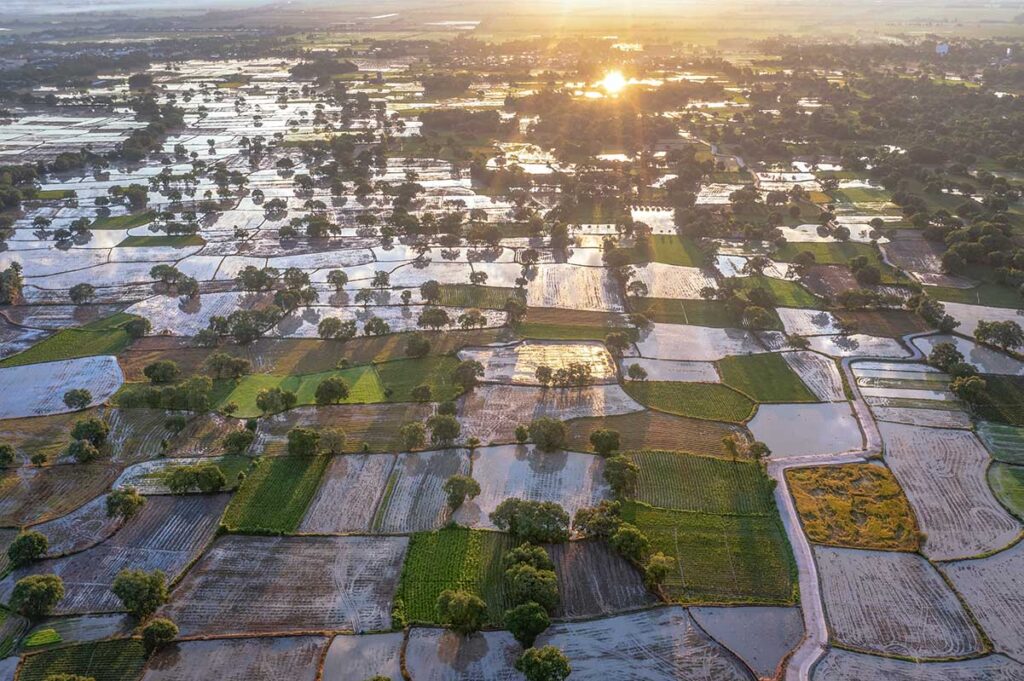
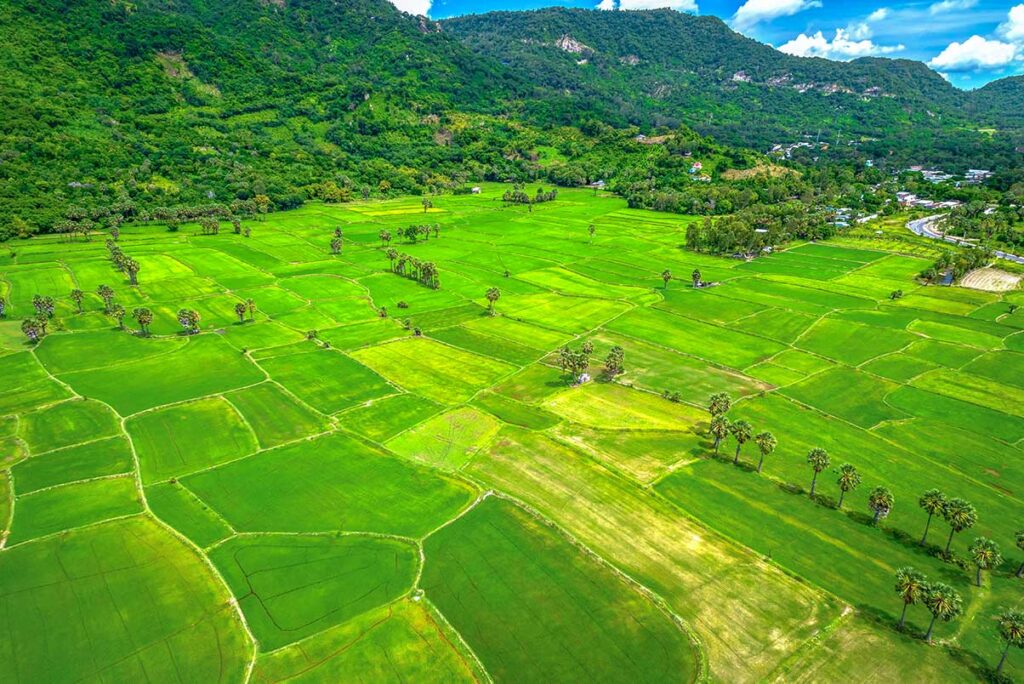
For photography, the most reliable light is still early morning or late afternoon. Midday can be uncomfortably hot and the colors look harsher. Around lakes and shaded areas, expect mosquitoes, especially in the rainy months.
Things to see
Ta Pa is best known for its rice fields, but there are a few other sights in the area that make the trip more rewarding. Most are small-scale and local, so don’t expect big attractions, but if you combine them you can easily spend a half or full day exploring around Tri Ton.
1. Rice Fields & Sugar Palm Trees
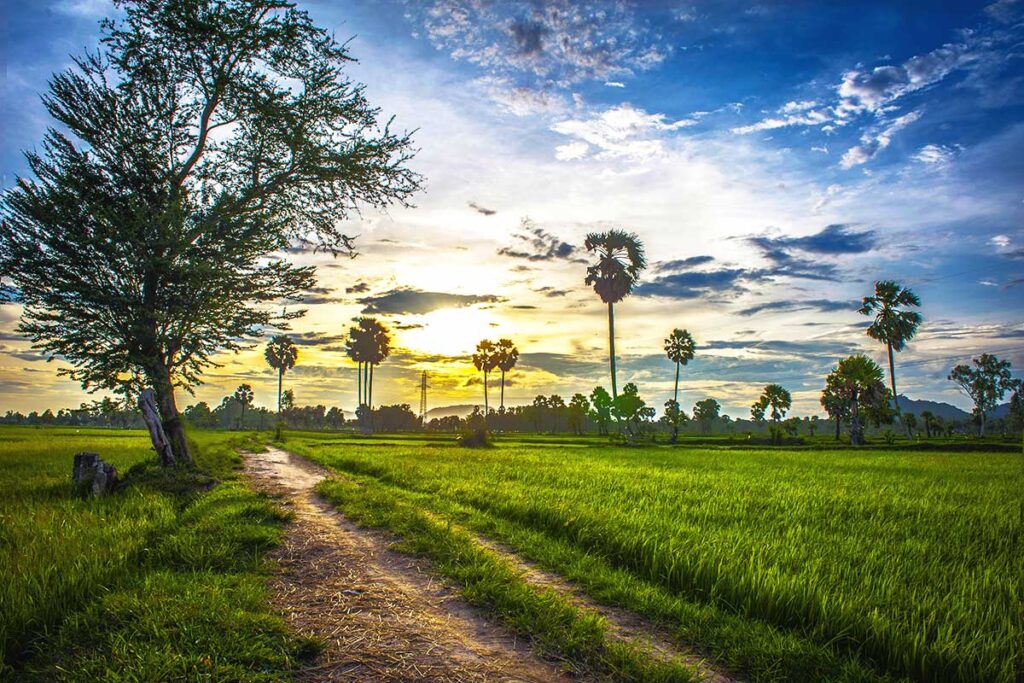
The rice fields themselves are the highlight. The flat terrain makes them easy to admire from ground level, but they are especially photogenic from above if you have a drone. What gives this landscape its unique character are the tall sugar palm trees scattered across the paddies. These palms are deeply tied to Khmer culture in An Giang and appear in almost every postcard image of the province. Together with the rice fields, they create the classic countryside scene that many travelers come here to see.
2. Ta Pa Pagoda
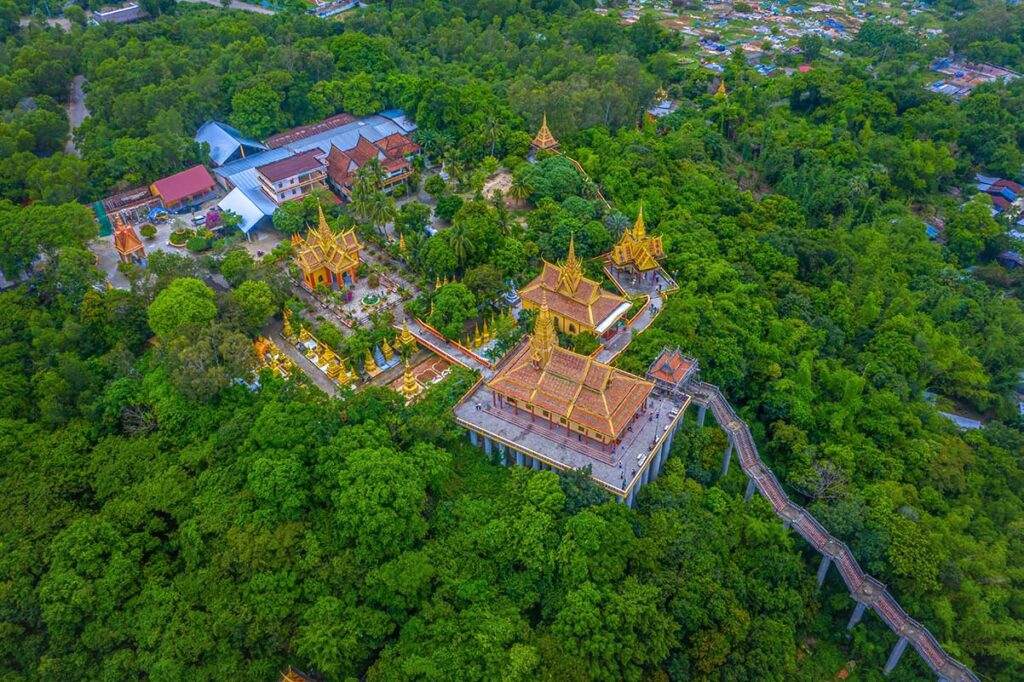
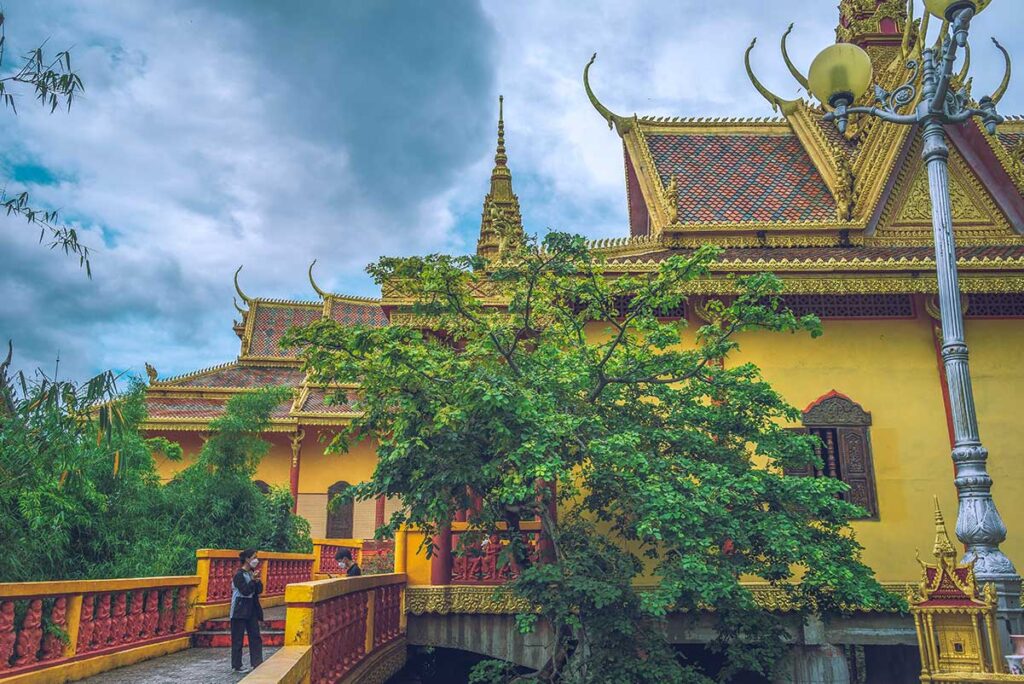
On a small hill overlooking the fields sits Ta Pa Pagoda, a Khmer Theravada Buddhist temple. It has bright yellow Khmer-style architecture and offers peaceful views over the rice fields and palm trees below.
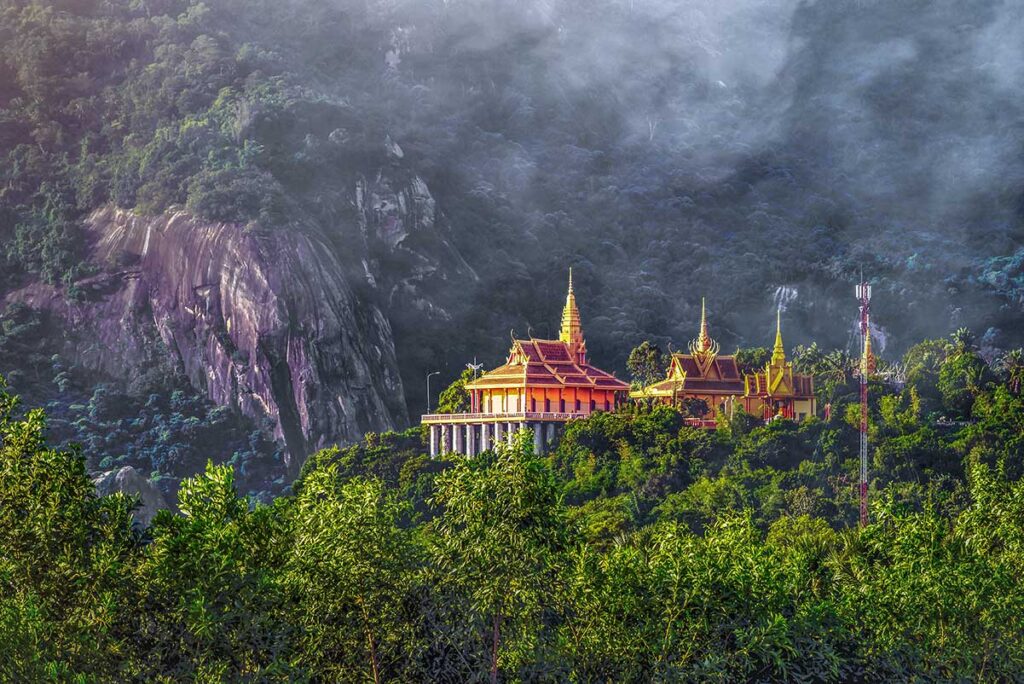
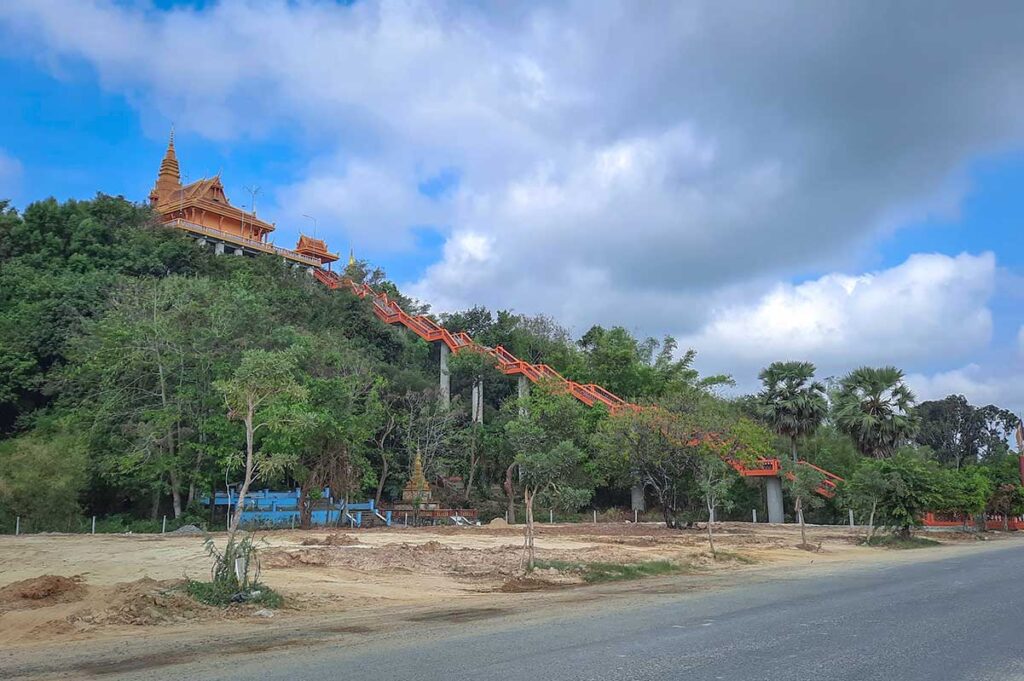
The climb is not long, but it gives you a quiet moment away from the flatlands. While not the most spectacular pagoda in Vietnam, it feels authentic and is an important religious site for the local Khmer community.
3. Ta Pa Lake (Ô Thum Lake nearby)
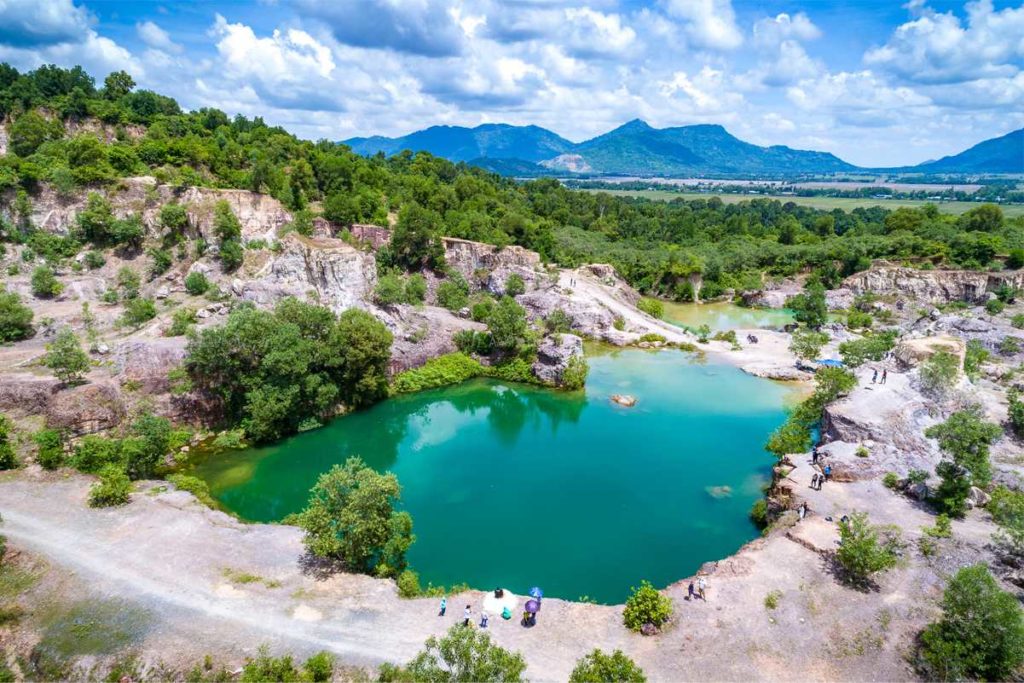
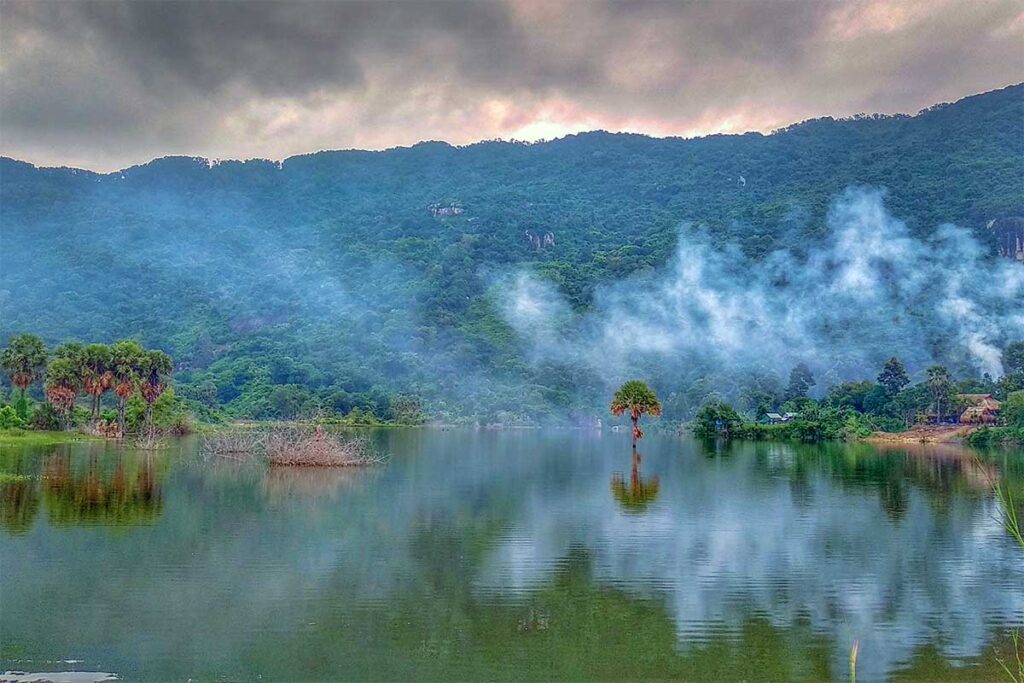
Just behind the pagoda is Ta Pa Lake, a former stone quarry that has filled with water. The lake is known for its striking colors, which can shift from turquoise to emerald depending on the light. Locals often come here for picnics, and small stalls serve simple dishes, most famously grilled chicken (often referred to as gà đốt Ô Thum). The setting is relaxed but also brings mosquitoes, so insect repellent is useful if you stay around sunset.
4. Soài Chek Lake
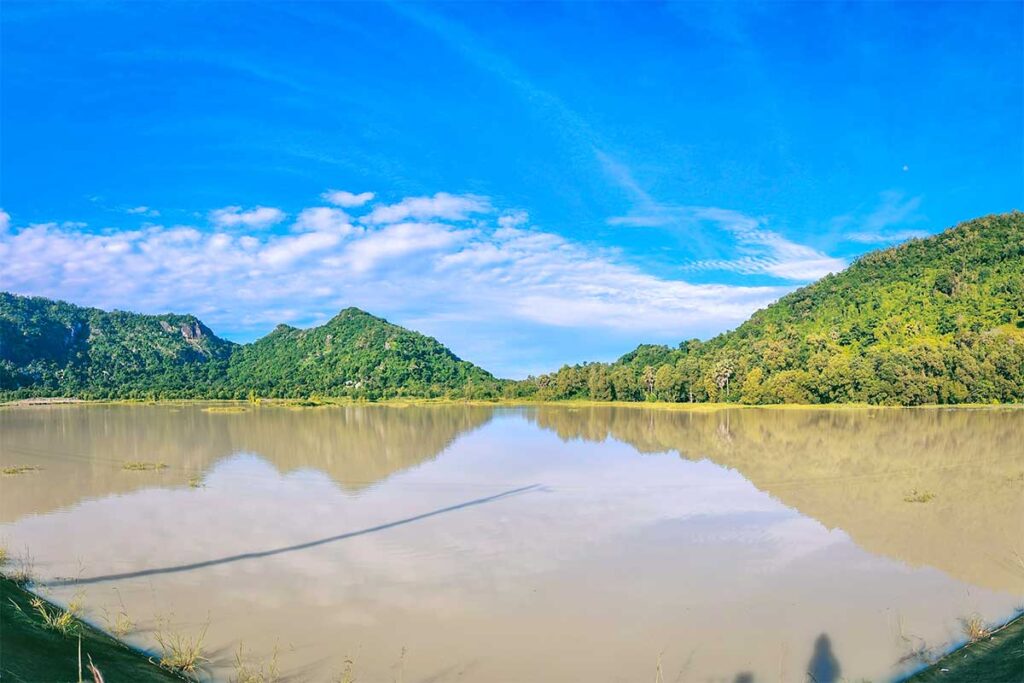
A little further out, Soài Chek Lake is quieter than Ta Pa Lake and has a more natural atmosphere. It’s a pleasant stop in the late afternoon, when the sun sets behind the surrounding hills. A few vendors sell snacks and coconut ice cream, making it a nice place to pause on a motorbike ride. Don’t expect facilities beyond that, but the peaceful setting is its charm.
5. Elephant Head Rock
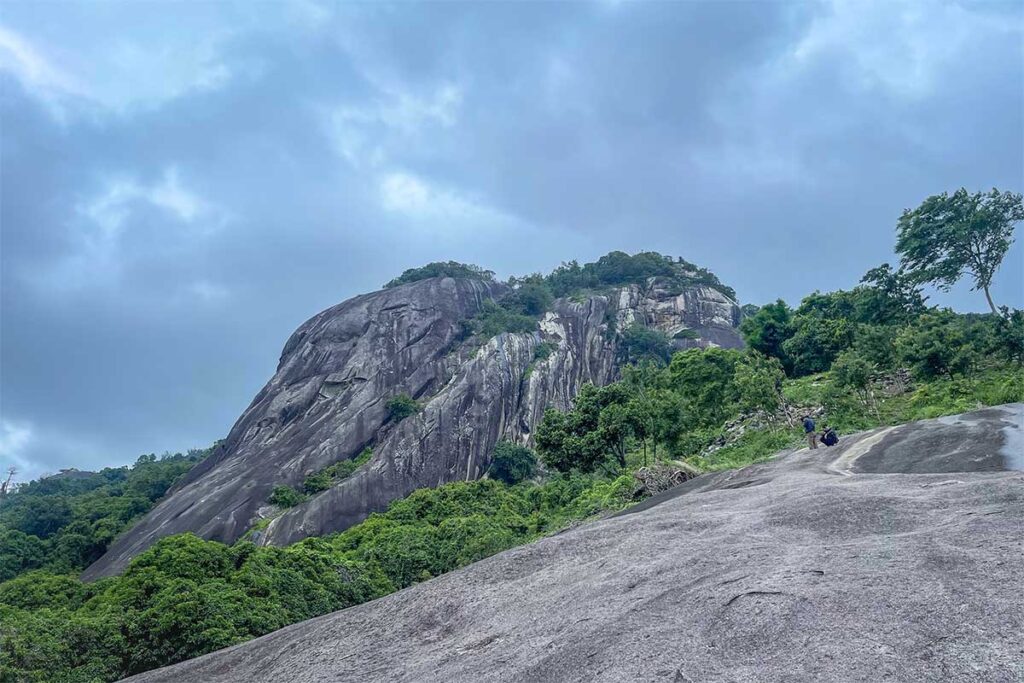
For something different, you can stop at Elephant Head Rock, a natural formation said to resemble the head of an elephant. A short but fairly steep path leads up to the rock, where you get a clear view over the surrounding fields and lakes. It’s not an essential stop, but if you’re nearby it’s a fun little detour and a chance to stretch your legs.
6. Tuc Dup Hill
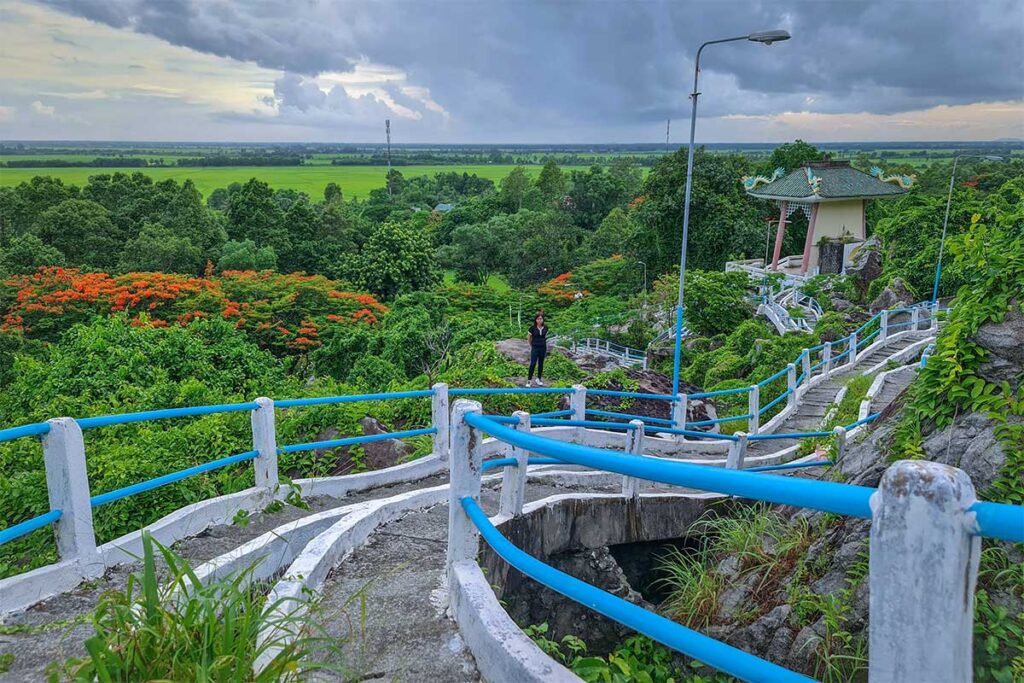
Tuc Dup Hill is often listed in domestic travel guides, but it is mainly a local tourist park.
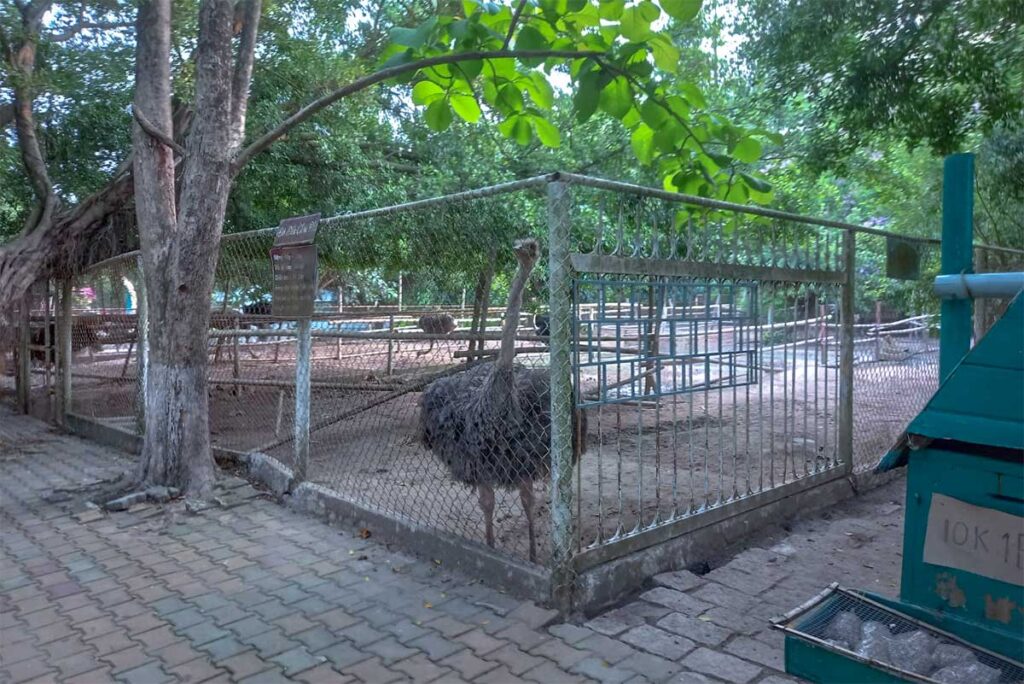
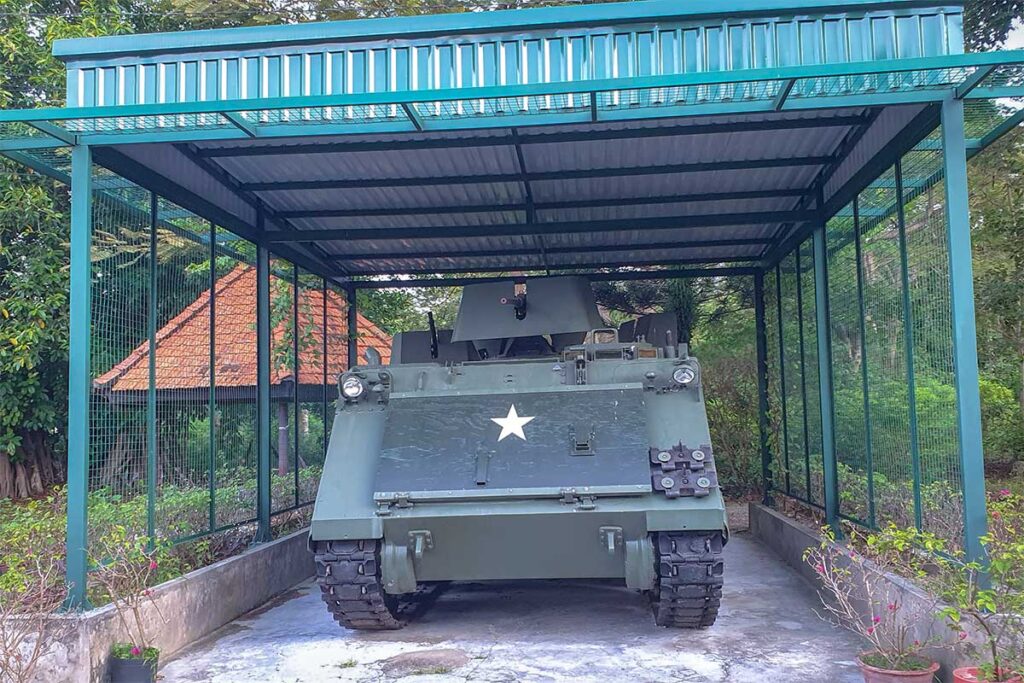
The site has some historical significance related to the war, but today it is better known for staged attractions and caged animals kept in poor conditions. Unless you’re traveling with Vietnamese friends who specifically want to visit, this place is not recommended.
How to get there
The most practical way to reach Ta Pa is to first travel to one of the main towns in An Giang. For most travelers, Chau Doc is the best hub. It has decent accommodation, boat tours on the Mekong, and connections onward to Cambodia. From Ho Chi Minh City, Chau Doc is about 6–7 hours by bus or car.
An alternative is Long Xuyen(about 1.5 hours away) and also has good transport links. Ha Tien is another option if you plan to continue to Phu Quoc or cross the border into Cambodia, but it’s less convenient if you want to focus on An Giang and the Mekong Delta. From Can Tho, expect around 3.5–4 hours to Chau Doc, or slightly less to Long Xuyen.
Once you’ve reached Chau Doc, Long Xuyen, or another nearby hub, it’s an easy drive into the Tri Ton area where Ta Pa is located. For details on actually reaching the rice fields and moving between sights, see the next section on Getting Around.
How to get around
Getting to Tri Ton is straightforward, but moving around the sights requires some planning. The area is rural and spread out, so your choice of transport will shape how easy or enjoyable the trip is.
Tour options
It’s difficult to find tours that focus only on Ta Pa. Most organized trips include the rice fields as part of a broader An Giang or Chau Doc package. If you’re short on time or prefer not to worry about logistics, this can be the easiest way and your make the most out of your time in An Giang.
Motorbike
Exploring by motorbike is the most flexible option. The roads around Tri Ton are quiet and relatively easy to ride, with rice fields and palm trees right along the roadside. It’s also the cheapest way to get around. That said, without a valid license or riding experience in Vietnam, it’s not recommended—you risk both fines and safety issues.
Car with driver
Hiring a car with driver is a comfortable option, especially in the heat. Keep in mind that a driver is not a guide: you’ll need to clearly explain where you want to stop, as they may otherwise pass by places that look interesting to you. For detailed advice, see our separate guide on renting a car with driver in Vietnam.
Cycling
The landscape around Ta Pa is flat, which makes cycling possible. Some travelers enjoy this pace, especially for photography. However, distances between sights are longer than they look on the map, and the heat can be intense. If you want to cycle, come prepared with plenty of water and a proper bicycle—better through an organized cycling tour rather than a basic free bike from a guesthouse.
Where to stay
If you want to stay close to the rice fields, there are a handful of small guesthouses and homestays in Tri Ton. These are mostly simple, family-run places with very basic comfort. They work fine for one night if your goal is to catch sunrise or sunset at Ta Pa, but don’t expect much in terms of facilities or English spoken.
Most travelers prefer to base themselves in Chau Doc, about an hour’s drive away. Chau Doc has a wider range of hotels, homestays, and boutique stays, along with restaurants and boat tours that make it a more practical hub. Another option is Long Xuyen (about 1.5 hours from Ta Pa), which is a larger city with more modern accommodation and good connections to the rest of the Mekong Delta.
In short, you can stay right in Tri Ton if you want the local experience and don’t mind simple standards, but for comfort and convenience Chau Doc or Long Xuyen are the better bases.
Tips for visiting Ta Pa
What to Bring
This is a rural area with very limited services. Bring sun protection, mosquito repellent, and enough cash, as card payments are rare. Carry water and snacks, especially if you plan to cycle or spend more time at the lakes.
Off the Beaten Track
Ta Pa is not a polished tourist destination. Don’t expect English-speaking staff, detailed signage, or well-organized tours. Infrastructure is basic, which is part of the charm but also means you need to be a little more self-reliant.
Time Needed
A half-day is enough to see the rice fields, the pagoda, and Ta Pa Lake. If you want to include Soài Chek Lake, Elephant Head Rock, and stop more leisurely along the way, allow a full day. Beyond that, there isn’t a long list of attractions, so it’s best combined with other parts of An Giang.
Next destinations
- Chau Doc – The main hub in An Giang, about an hour from Ta Pa. Known for its floating markets, Tra Su Cajuput Forest, Sam Mountain, and boat trips on the Mekong. A good base if you want more comfort and cultural experiences.
- Ha Tien – Around 3 hours west of Tri Ton, Ha Tien is the jumping-off point for ferries to Phu Quoc Island and for overland travel into Cambodia. It makes sense if you plan to continue toward the coast.
- Phu Quoc – Vietnam’s largest island, popular for beaches and resorts. Easily reached via ferry from Ha Tien, so a natural extension if you want to combine the Mekong Delta with some beach time.
- Cambodia– From Chau Doc you can take a speedboat up the Mekong to Phnom Penh, while from Ha Tien there are overland border crossings to Cambodia’s southern coast (Kep and Kampot). Both routes are convenient if you’re continuing your trip beyond Vietnam.
